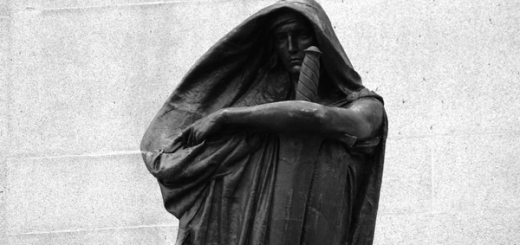Whatcott v Saskatchewan (Human Rights Tribunal): Part II, What to do with Whatcott?
Whatcott v Saskatchewan (Human Rights Tribunal) Part I outlined the grounds on which the tribunal’s decision was upheld at the trial level. Whatcott appealed again, and found a sympathetic ear at Saskatchewan’s Court of Appeal. Here is how the rest of Whatcott’s journey to the SCC unfolds.
Anti-gay demonstrator Bill Whatcott will soon learn what the Supreme Court of Canada has to say about the offensive flyers he dumped on Western Canada in the early 2000s. Whatcott spammed “hundreds of thousands” of Saskatchewanites until four people filed human rights complaints against him, claiming he had violated the Province’s hate laws. He responded by claiming he was participating in democratic debate about a policy issue that concerns children, ie., whether Saskatchewan’s school board should follow Ontario’s example and include information on LGBT issues in their curriculum.
For those who have not been following this case, you would not yet know that there is a final thundercloud in this perfect storm of fundamental freedoms: Whatcott demonstrates on behalf of his religion, the Christian Truth Activists.
Oral submissions have been made; some had observed counselors hiding their reddening faces and shaking with silent laughter. A media lockup has been requested. Sadly, I do not anticipate an invitation to this event. However, soon, (if we are lucky) we will learn not only how to balance all the competing rights at stake here but also how Canada’s human rights tribunals are supposed to work.
The Court of Appeal says: gay teachers in public schools? Debatable
Hunter JA noted that this particular provision, s. 14(1)(b) of Saskatchewan’s Human Rights Code, has only been tested a few times since its enactment in 1979. She sets out the Taylor test for limiting freedom of expression, emphasizing “the bar is set very high” (para 44). She also reiterates Taylor’s emphasis on the necessity of evaluating speech using a contextual analysis – in other words, reading the Code with an understanding of the purposes informing it and the factual findings pertaining to the particular case. In conducting a s 14 analysis, the protection of freedom of speech and freedom of religion must be carefully considered.
Obviously, there is an abundance of jurisprudence on the limits of freedom of expression; please bear with me while I summarize it briefly. All emphasis is added.
Hunter JA found that the appeal in Owens (2010), taken together with the tests for protection of free speech in Keegstra and Taylor, indicate that “neither the perspective of the person who sends the message nor the sensibilities of the person who may be the target of the message, has a part to play in determining the effect of the message” (para 55).
To allow subjective factors to feature in the analysis would either create an unacceptable chill on the freedom of speech or make the provision inapplicable in cases where the message was clearly dangerous, rendering the legislation useless.
Taking an objective view of the context of the expression is particularly important, she writes, when considering complaints based on sexual orientation–the offending speech is more often than not of a ‘moral’ character, and “[i]t is acceptable, in a democracy, for individuals to comment on the morality of another’s behaviour” (para 62). To be deemed hate speech, “the expression must meet the Taylor test for hatred as proscribed in Bell [detestation, calumny and vilification], and must be clear on the face of the publication, without resort to conjecture and speculation” (para 65).
Having set out the applicable law, Hunter JA found that the Tribunal had not considered the flyers in their entirety, but had inappropriately quoted content out of its context. As a result, it had distorted the impact of the flyers without considering the impact a s. 14(1)(b) sanction would have on Whatcott’s rights. When taken in their entirety, the flyers did not rise to the level of hatred required. Moreover, she writes, Whatcott’s flyers were a response to a policy decision made by the Saskatoon School Board which recommended that information on homosexuality be included in the school curriculum and libraries(71). Whatcott’s key message in this debate was:
“Now the homosexuals want to share their filth and propaganda with Saskatchewan’s children.” (Flyer D, “Keep Homosexuality out of Saskatoon’s Public Schools!”)
As for the flyer with the handwritten notes (“Sodomites are 430 times more likely to acquire Aids & 3 times more likely to sexually abuse children!”), Hunter JA found that it did not contribute to any debate about what was being taught in schools , nor could it be attributed to a larger debate about morality. However, while it might be a “smear” against homosexuals, it did not “tip the balance in favour of limiting free expression so that it has the effect of censoring the entire publication” (79).
Regarding the comments on the classifieds section of Perceptions, (“Saskatchewan’s largest gay magazine allows ads for men seeking boys!” and “If you cause one of these little ones to stumble it would be better that a millstone was tied around your neck and you were cast into the sea”), Hunter JA wrote:
“a reasonable person on reading of the plain wording of the flyer in its entirety would not conclude that the effect of the flyers exposes or tends to expose homosexuals to hatred as that term is prescribed in Bell” (Para 85).
Why? The test for whether the publication breaches the Code must be carried out from an objective standpoint based on the face of the publication. When the words are as “ambiguous” as they are held to be here, they ought to be interpreted in the manner which best protects freedom of expression.
Hunter JA found that because, in aggregate, the flyers did not expose homosexuals to the level of hatred required, and because some contributed to an ongoing debate about homosexuality in public schools, the appeal could be denied based on the provisions of the Code alone. She stopped short of addressing the other issues at appeal advanced by the litigation parties.
Smith JA agrees this aint hate, and elaborates:
Smith JA, concurring in the result, further commented on the state of the law. To find that an expression deserves prohibition based on s. 14(1), “the causal connection between the (impugned) expression and the discriminatory practices otherwise prohibited in the Code (is that) the causal effect of the expression is, for example, to promote stereotypes that themselves jeopardize equal opportunities for employment, housing, education and so on” (para 97).
He discusses at length the role of freedom of expression in a democratic society, and finds that a decision maker must balance the goals of s 14(1) against other rights protected in the Code. In applying the provision, care must be taken to ensure that, while its use will limit expression, the harm caused does not exceed the s. 1 justification for this infringement enunciated in Taylor and accepted in Bell (para 110).
The objective enlivening the discourse is relevant, argues Smith JA, entertaining Whatcott’s “hate the sin but not the sinner” argument. Determining whether the expression rises to the level of hate required to justify banning it necessitates an inquiry into the declarant’s intentions. Whatcott insists it is the activity of homosexual sex, and not the homosexual himself that his religion takes issue with. Smith JA endorses this argument to some extent, noting that questions of sexual morality “lie near the heart of speech worthy of protection from the chilling effects legislative prohibition” (para 134).
Finally, he asks the critical question that demonstrates the difference between the judgments of Hunter JA and Kovach JA at the trial level: do the restrictive words in the phrase, “promotes hatred or contempt,” in s. 14(1) pass the strict common law standard we have developed in evaluating hate speech?
He concludes at para 138, holding: “Where, on an objective interpretation, the impugned expression is essentially directed to disapprobation of same-sex sexual conduct in a context of comment on issues of public policy or sexual morality, its limitation is not justifiable in a free and democratic society.”
Conclusion:
In the US, Whatcott would not have been fined in the first place. In the UK, Whatcott would not have been pamphleting this material in the first place. Where, in Canada, do we stand in that spectrum?
In 1995, Cory J wrote in Egan v. Canada, gays and lesbians, “whether as individuals or couples, form an identifiable minority who have suffered and continue to suffer serious social, political and economic disadvantage.” Reactions to Whatcott’s flyers should not be cavalierly dismissed as ‘hurt feelings.’
It is important to consider that allowing Whatcott to continue distributing these flyers could potentially brush against another constitutional right – the right to equality. It is all but uncontroverted that homosexuals remain a vulnerable and often highly stigmatized group. In fact, this is the very reason that Canada has extended the right to equality to people who suffer from discrimination on the basis of their sexual orientation. That does not mean just based on how gays define their sexuality, but also how they act on it. Thankfully, Whatcott does not seem to be in a position of power – but common misconceptions and fears have led to centuries of discrimination against individuals based on sexual orientation. The messages he sends could very likely generate sexual discrimination against the homosexual community.
A columnist at The Calgary Herald reports that the Albertan legislation governing discriminatory publications and notices (s. 3 of their Code) will soon be “eliminated.” That certainly does not sound like a step towards progress. While the provisions do limit the freedom of expression, and in some cases freedom of religion, the Code should be rewritten so that they reflect a reasonable limit on those rights that are demonstrably justified in a free and democratic society.
In coming to their conclusion, I hope the SCC will at least recognize that these publications violate s. 14(1)(b), both on their face and within their context. The Court should either narrow the scope of the provision or at least re-examine the constitutionality of these provisions without simply declaring that the flyers do or do not contravene the Code.
PS – for anyone still reading: do not forget – Taylor was heard around the same time as R. v. Keegstra [1990] and R. v. Andrews, [1990] both of which concerned s. 319(2) of the Criminal Code, which prohibits “willfully promoting hatred.” All three decisions were split 4/3 – Dickson, CJC (as he was then) wrote for the three majorities that upheld the legislation. McLachlin J (as she was then) wrote the dissents in all three. Will McLachlin CJC (as she is now) tip the balance in favour of protecting free speech?







Join the conversation